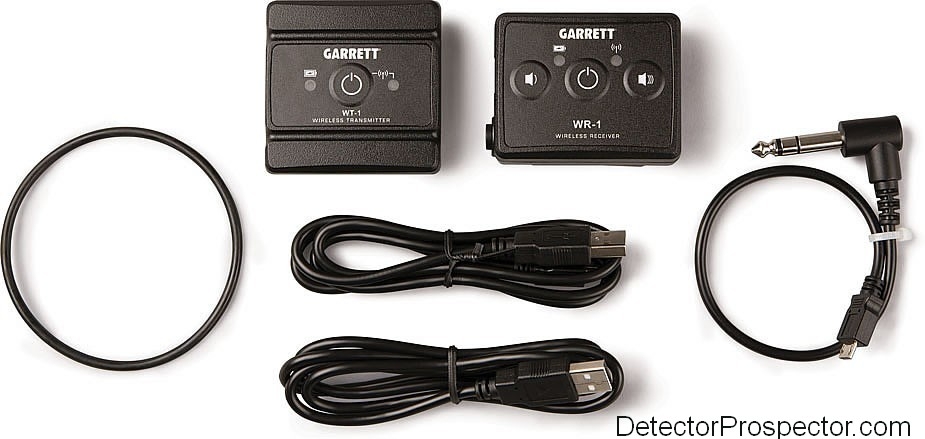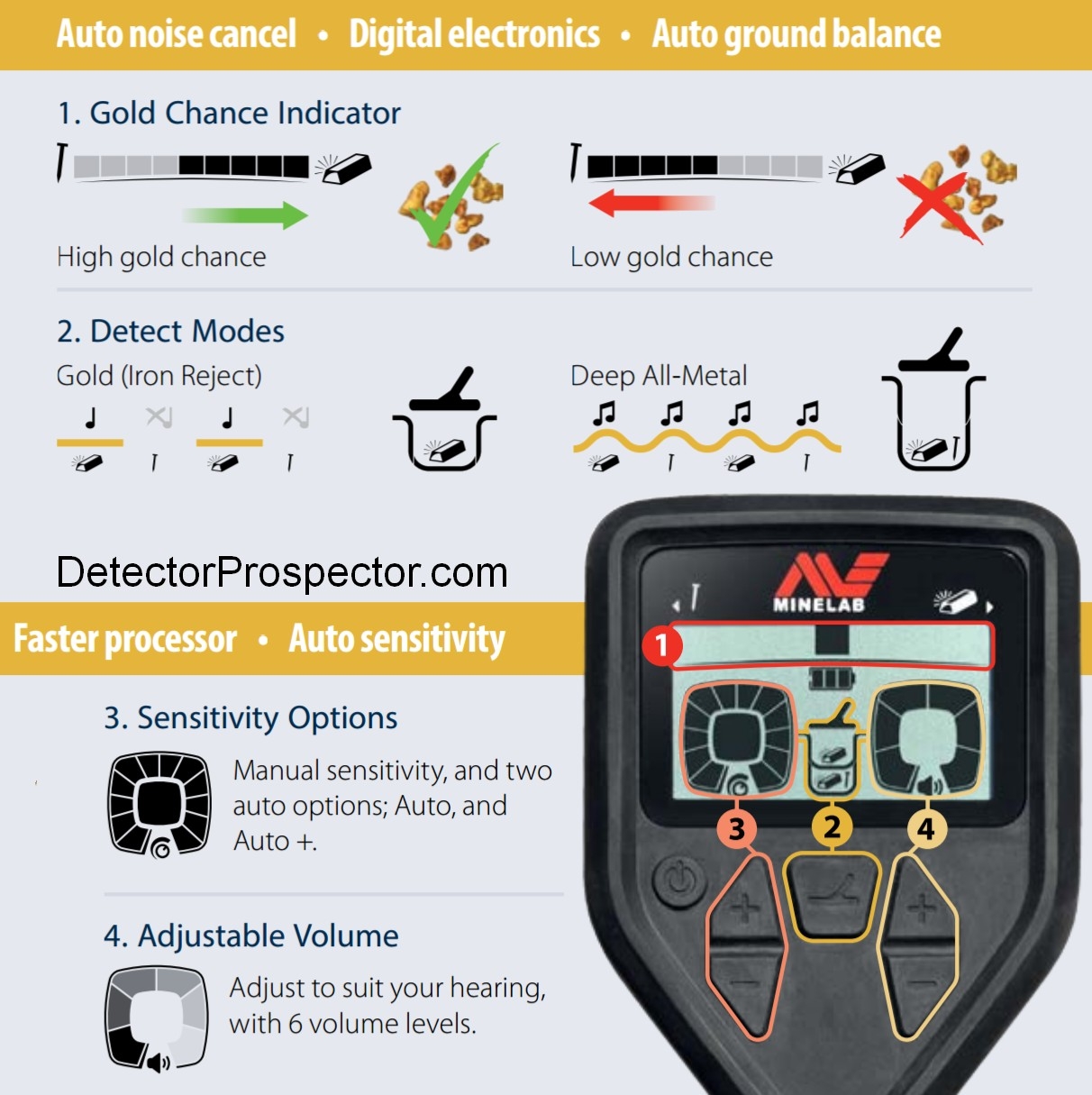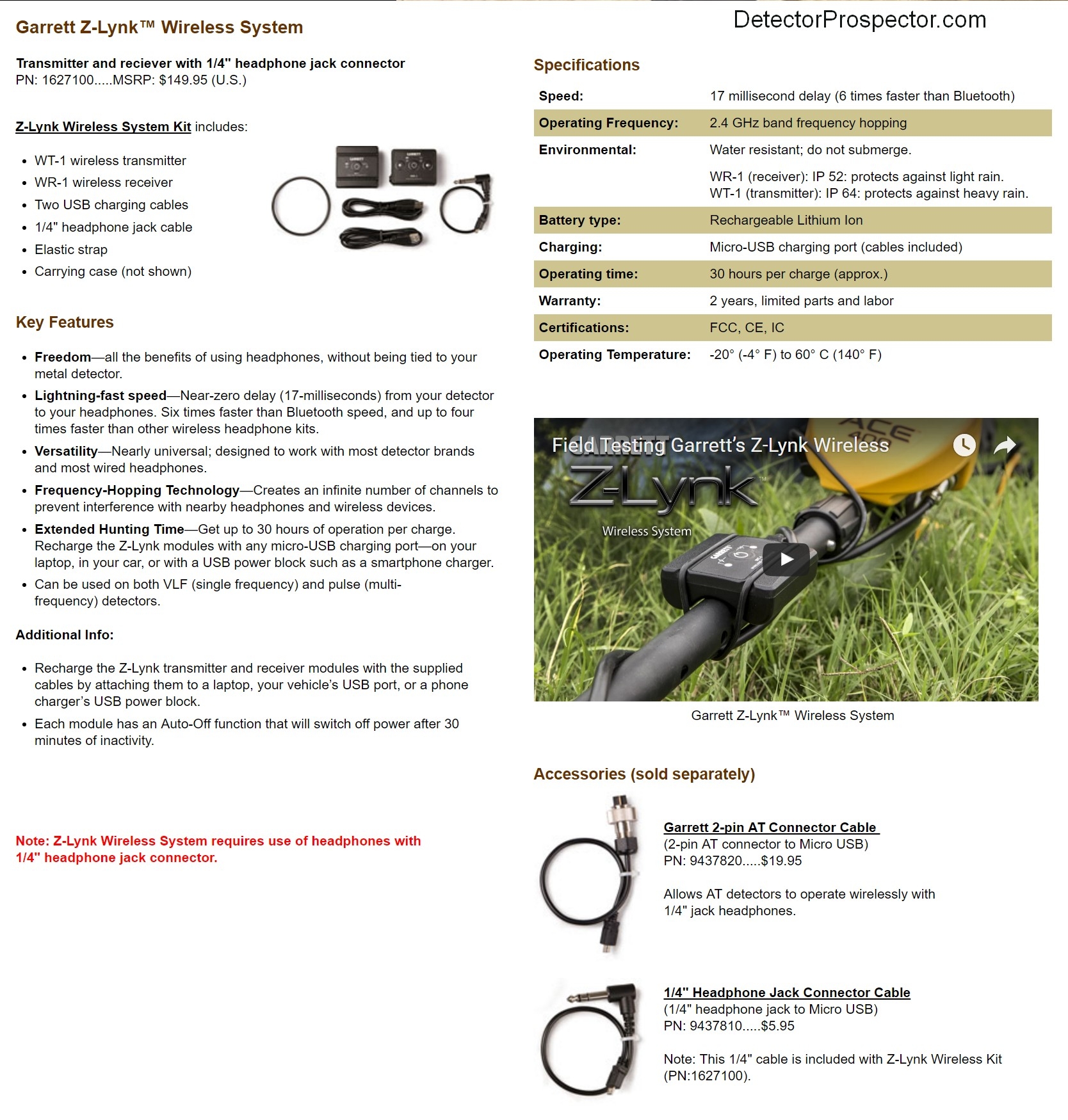-
Posts
19,773 -
Joined
Content Type
Forums
Detector Prospector Home
Detector Database
Downloads
Posts posted by Steve Herschbach
-
-
I from practical results in the field consider low frequencies to be better for large/strong/thick targets and high frequencies to be better for small/weak/thin targets. For instance a U.S. silver quarter is a strong high conductive target that does well at lower frequencies.
However, in Europe very thin hammered silver coins are common, and these may be cut in half or quartered in the old days to make change. Even though these targets are silver, a high conductor, they are small and thin and so actually do better at high frequencies.
Therefore I personally do not think much in terms of what the items is made of (gold, silver, low conductor, high conductor) but in terms of size. The larger the items are, the better off you are with lower frequencies as there is no problem detecting the target, and lower frequencies reduce ground effects that work against you.
I would consider dime size and larger items as "large" targets. As targets get smaller than dime size, they respond better at higher frequencies. The smaller they are, the higher the frequency required to get a decent signal from them. However, the higher the frequency, the more the ground and hot rocks respond. It is this sensitivity to ground effects that tends to "blind" high frequency detectors and result in depth problems in bad ground. High frequencies air test just fine; it is in the ground where the issues occur.
With that in mind, when looking for large items I tend to lower frequencies and when hunting very small items I go to higher frequencies.
There is of course more to it than that. Here are some technical details and references to more in depth information......
George Payne was one of the engineers who patented many of the basic concepts used in VLF detectors to this day. Here is an excerpt from his article at http://jb-ms.com/Baron/payne.htm (2002):
"The r component acts differently. It is maximum at one particular frequency and decreases if you go up or down in frequency. We call the special frequency at which the r signal is maximum, the target’s “-3db” frequency. It also turns out that at the -3db frequency the x signal is one-half of its maximum value. This special frequency is unique to each target and is different for different target.
The higher the conductivity of the target the higher will be the targets -3db frequency. Conversely, the lower the conductivity the lower the -3db frequency. The -3db frequency of the high conductivity target will also make the r signal peak at a high frequency, normally well above the operating frequency of the VLF detector. This will make the high conductivity target have lower sensitivity on the VLF detector because the r signal amplitude drops if we are significantly below the -3db frequency. Simply put, maximum sensitivity on a VLF detector would be if we position the operating frequency directly at the target’s -3db frequency. For example, a dime and penny have a -3db frequency of about 2.7KHz. This is where their r signal peaks and would be the best frequency for picking them up using a VLF detector. However, a silver dollar has a -3db frequency of 800Hz. Nickels, on the other hand, have a -3db frequency, where its r peaks, at about 17KHz. Targets like thin rings and fine gold are higher still. Clearly there is no one frequency that is best for all these targets. The best you can do is have an operating frequency that is a compromise."So that sets up the basics for air tests. The problem is we have to deal with the ground. Lower frequencies tend to be better at reducing ground issues, while higher frequencies light up both the ground and hot rocks lower frequencies might ignore. You are looking for a frequency which best lights up a target while minimizing ground effects. All in all mid frequency machines in the 10-20 kHz range offer good compromise solutions, above 20 kHz tends to be the realm of specialized prospecting detectors, and under 10 kHz the realm of the "coin detector".
Some prior posts with more details:
Frequency Changes ( Effects ) While Running All Metal
Selectable Frequency And Multiple Frequency
Why High Frequency? The Effects Of Different Frequencies On A Small Gold Target (Video)
-
I have been using the ATX some more and I am impressed with the feel and especially the knock resistance of the new 11 x 13 coil. If being center mounted and knock resistant is important to you then you may want one, but what you are not going to see is any serious difference in the performance compared to the 10 x 12 coil. If you get the 11 x 13 DD you can expect performance almost identical to the 10 x 12 DD. For all intents and purposes you can look at them as being the same coil, the 10 x 12 for underwater use, the 11 x 13 for dry land use.
I so far personally have not found a scenario gold prospecting where the 11 x 13 mono outperforms the 11 x 13 DD although I suspect it will do so on very large (multi-ounce) nuggets in the right ground. If forced to choose between the two right now I would favor the 11 x 13 DD myself, if for no other reason than to retain the ferrous discrimination capability.
-
On 6/17/2017 at 10:37 PM, Moses said:
Woooow Steve do dd coils get smaller nuggets than mono coils???? Same size coils?
That would depend on the specific detector and coil involved plus the ground mineralization. In general mono coils do well but the Garrett DD design is unique. The overlap in the middle opens up to create a small 5" inner coil area that is very hot on small gold. I cover this in some detail in my first report on finding gold with the Garrett ATX. This special design makes the Garrett DD coil hotter on small gold than one might expect from a normal DD coil.
-
25 minutes ago, IdahoAl said:
Question ...Is the Z - Link compatible with the Minelab SDC 2300 without spending $100 for a adapter cable??? Thanks for any info on this.
IdahoAl
No, you need the SDC adapter cable. In theory that makes the Minelab Pro-Sonic a better deal for the SDC since the Pro-Sonic comes with the adapter. But with Pro-Sonic at US$269 and Z-Lynk at US$128 you can buy the Z-Lynk and SDC adapter and still be money ahead.

-
Despite my own interest in the XP DEUS I doubt it will have a serious impact on the prospecting market in the U.S. unless a dedicated like the Depar DPR 600 is made available. The DEUS high frequency option as currently configured is just too expensive given the other options available to prospectors. You have to be seriously interested in the other DEUS capabilities as a general purpose detector to want to pay the big bucks for it. It is kind of the same problem the White's V3i or other top end units face. The V3i can in theory do ok as a nugget finder with its 22.5 kHz frequency, but the reality as we all know is you never hear of such a thing. The V3i can no doubt do the job, but why pay $1500 for a machine when a $499 Gold Bug can do as well if not better? And why pay $1500 for the DEUS when an $800 GM1000 or Gold Bug 2 can do the trick as well?
The Depar DPR 600 however is nothing more than a DEUS locked into the Gold Field program and sold stock with the high frequency coil. At a current price of about $680 something like the DPR 600 would be very price competitive with other options on the market. I have to believe we will eventually see this option become a reality.
September 2018 - New XP ORX announced.
-
The GM1000 has no target id, just ferrous/non-ferrous discrimination. See the "Gold Chance Indicator" below. It actually has nothing to do with gold per se so it really is a "Non-ferrous Chance Indicator"

-
Fabulous find - thanks for posting Tom!
-
It would be nice to see a PI from Fisher again. It was rather shocking to me when the Impulse was retired and nothing replaced it. For a major manufacturer like First Texas to have not fielded any kind of PI for years is unheard of.
-
I understand Chuck. My information was posted for other people.
-
On 6/13/2017 at 11:53 AM, Aussieau said:
i unlike you steve need a battery that lasts all day
I need full day operation also. My attitude is that if a detector needs a battery swap during my lunch break to stay light then so be it. If running time on one battery is paramount then we already have detectors that do that anyway so no issue really. I agree though and that all day operation on a charge is preferable and should be no problem with modern Lithium Ion batteries.
Chuck, I personally would take a GM1000 over the TDI as a general nugget hunter. The problem as I have noted is that unless the mineralization is pretty severe then I think a good VLF is a better choice than the TDI SL. The GM1000 running in full auto is as close to a PI as you can get in a VLF, and even easier to operate. The main thing is it will bang hard on smaller bread and butter gold the TDI can't touch. The TDI does a decent job as a PI in high mineral ground but is poor in low mineral ground compared to a good VLF.
-
Others may want to leave the stock rod new in the box in case the detector gets sold later. Then use a GPX handle assembly instead, which will telescope to the desired length. Or use the included broomstick adapter!
-
Reactivity is like the exposure control on a camera. A long exposure/low reactivity setting takes a longer look at the target for more depth. However, adjacent targets that are too close by can sneak into the picture also. The shorter exposure/higher reactivity setting has less depth but less chance of nearby objects intruding. It does have the appearance of shrinking the coil footprint although the entire electromagnetic field is still in existence and so silent masking can occur.
The ground itself acts as a target and so higher reactivity settings can help reduce the masking effect of bad ground and nearby hot rocks. However, in a trash free, low mineral environment low reactivity settings are better.
For most intents and purposes you can treat the Reactivity control just like the SAT control for all metal. Both seek to enhance signals from desireable targets while suppressing or attenuating signals from undesired targets. The setting is adjustable/site specific and not a "set and forget" thing.
-
Great reporting Steve, thanks!
I think in terms of what detector would I want to have while wandering around in the California mountains. Where I might find an old camp site that I want to detect in for old coins. Or a trash filled mining pit trying to find a gold nugget in the midst of the junk. Also the machine to ride shotgun with the GPZ 7000. A good general purpose VLF with all the discrimination options plus very hot on gold.
Last year or more the Makro Gold Racer has fit the bill for me. My only minor complaint is that it is not quite as compact as I would like, and so the DEUS has been an alternative. Which is why I am waiting on the elliptical. Gold Racer at 56 kHz and 9" round DEUS coil at 59 kHz seem like a match up. The DEUS elliptical at 81 kHz should have an unfair advantage, or at least I hope so.
-
Metal detectors can sense both conductive and magnetic effects. Non-ferrous items have only conductive properties, whereas ferrous items have both conductive and magnetic properties. Many iron and steel items can unfortunately read non-ferrous. This thread goes into the details.
-
A few manufacturers have online warranty registration pages:
-
On 6/9/2017 at 4:40 PM, Mike C... said:
Question if you bought this from Chris why wouldnt you post any of this on his forum as well ?Just curious
 Mike C...
Mike C...
-
I guess that just depends on your skill and confidence. You might however need those headphones if the Z-Lynk battery goes dead.
-
I would be far more inclined to the TDI as a PI option than the Infinium even though the Infinium is waterproof. The coil options alone make it the more attractive alternative, plus you can get one with a warranty. Now that the Infinium has been discontinued used and no warranty is the only option. Unless a dealer has one hiding on a shelf still. A DFX / TDI pairing has possibilities as compared to the DFX / GB2. The Bug is going to do better with small gold but the TDI will handle bad ground better plus be a more useful beach machine. The TDI is a great beach detector, especially since it offers a "ground balance off" mode that offers extra power for beach detecting.
-
I think the Z-Lynk system is fabulous. Versatile, compatible, and affordable. Another home run by Garrett.

-
The DFX is about as good a beach machine as you will get in a VLF, where multifrequency is king. The only other route is to go to PI but I honestly think you overestimate the joys of digging bobby pins a foot deep. The more likely explanation is that It's getting harder to find jewelry on beaches for various reasons.
You clearly like your DFX and I think you would miss it. It really is a decent beach detector, so what you really need is a better nugget detector. The Gold Bug 2 is a classic and if mastered hard to beat.
It is a tough question really. There are lots of great "do-it-all" detectors on the market but when you try and mix nugget detecting and beach detecting things get complicated. Salt water responds like a weak gold target. So you can get machines that play nice in salt water, or machines hot on small gold nuggets, but you so far can't get both in one detector.
-
If you can't do the SDC the consider keeping the DFX and getting the Gold Bug 2 also. The DFX is a better beach detector than the CoRe.
-
All you can do is try it. I generally prefer tones as the theory is that completely discriminating/blocking items creates a depth loss in adjacent VDI numbers. These days it all being digital it really depends on how well the system is designed. DEUS V4 being so new I doubt very many people have real answers yet.
-
Since I still have a DFX myself I can vouch for it as a good detector. Being dual frequency it actually is a decent beach detector, better than the Beach Hunter ID. But also not waterproof.
Then if you can get the SDC 2300 for just one other detector instead of the Infinium and Gold Bug 2. The SDC is as hot as a prospecting PI gets, and in bad ground will do better than a VLF so you get best of both worlds. The SDC is actually waterproof for saltwater use also.
Anyway, I think your DFX and the SDC would be a killer pair.
Oops almost forgot - welcome to the forum!
-
You can just start swinging if you want or give it a pump or two. It honestly does not matter much since the GM1000 is always tracking. I just turn mine on and start swinging.


VLF Punching Deeper
in Metal Detector Advice & Comparisons
Posted
As a general rule high frequency detectors will have better battery life. This can be seen directly with machines like the Nokta Impact and White's V3i, where the lower frequency settings more quickly consume battery power than the high frequency settings.